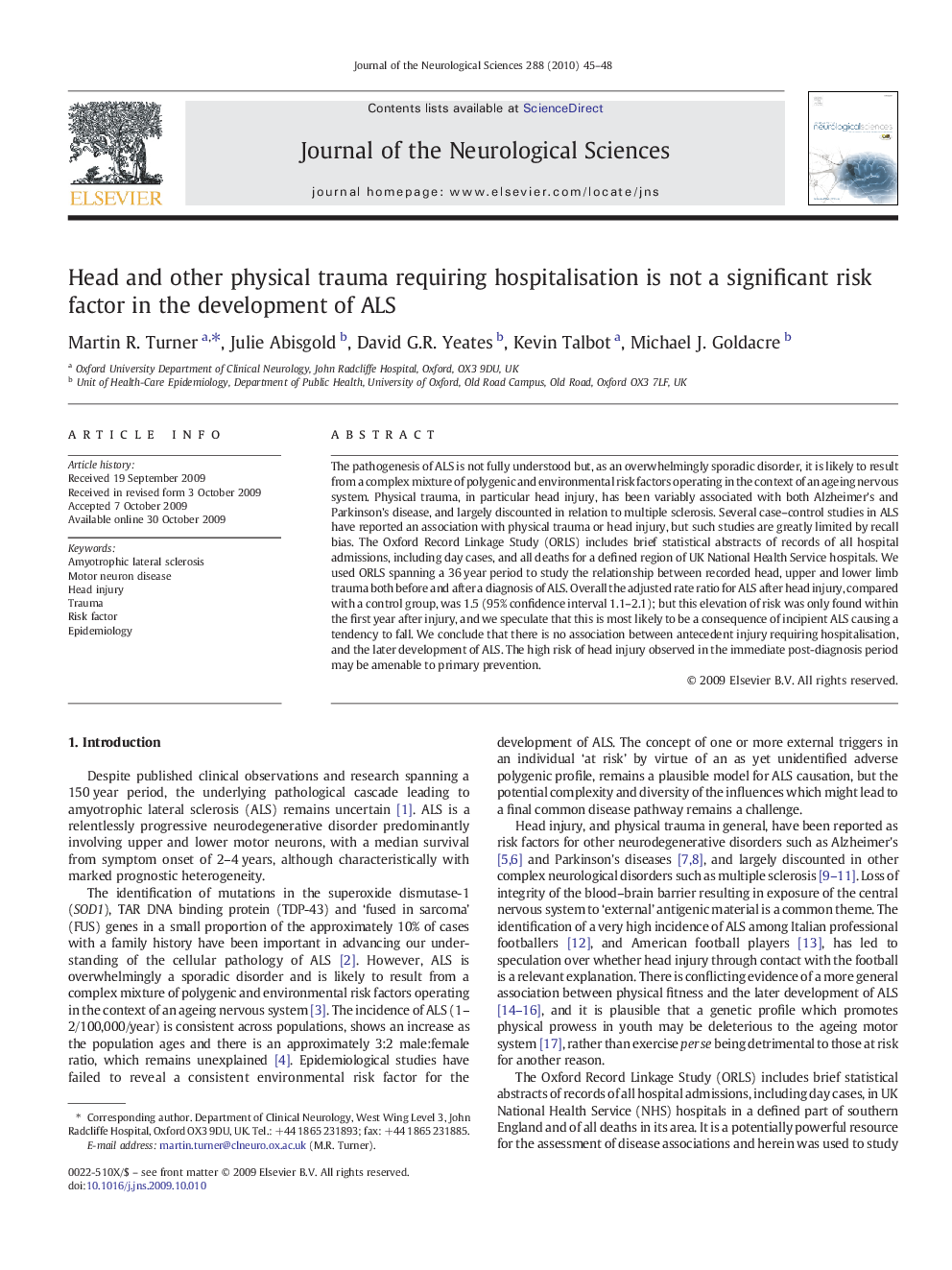| Article ID | Journal | Published Year | Pages | File Type |
|---|---|---|---|---|
| 1914753 | Journal of the Neurological Sciences | 2010 | 4 Pages |
The pathogenesis of ALS is not fully understood but, as an overwhelmingly sporadic disorder, it is likely to result from a complex mixture of polygenic and environmental risk factors operating in the context of an ageing nervous system. Physical trauma, in particular head injury, has been variably associated with both Alzheimer's and Parkinson's disease, and largely discounted in relation to multiple sclerosis. Several case–control studies in ALS have reported an association with physical trauma or head injury, but such studies are greatly limited by recall bias. The Oxford Record Linkage Study (ORLS) includes brief statistical abstracts of records of all hospital admissions, including day cases, and all deaths for a defined region of UK National Health Service hospitals. We used ORLS spanning a 36 year period to study the relationship between recorded head, upper and lower limb trauma both before and after a diagnosis of ALS. Overall the adjusted rate ratio for ALS after head injury, compared with a control group, was 1.5 (95% confidence interval 1.1–2.1); but this elevation of risk was only found within the first year after injury, and we speculate that this is most likely to be a consequence of incipient ALS causing a tendency to fall. We conclude that there is no association between antecedent injury requiring hospitalisation, and the later development of ALS. The high risk of head injury observed in the immediate post-diagnosis period may be amenable to primary prevention.
